20 Companion Plants That Will Help Your Lavender Thrive This Season
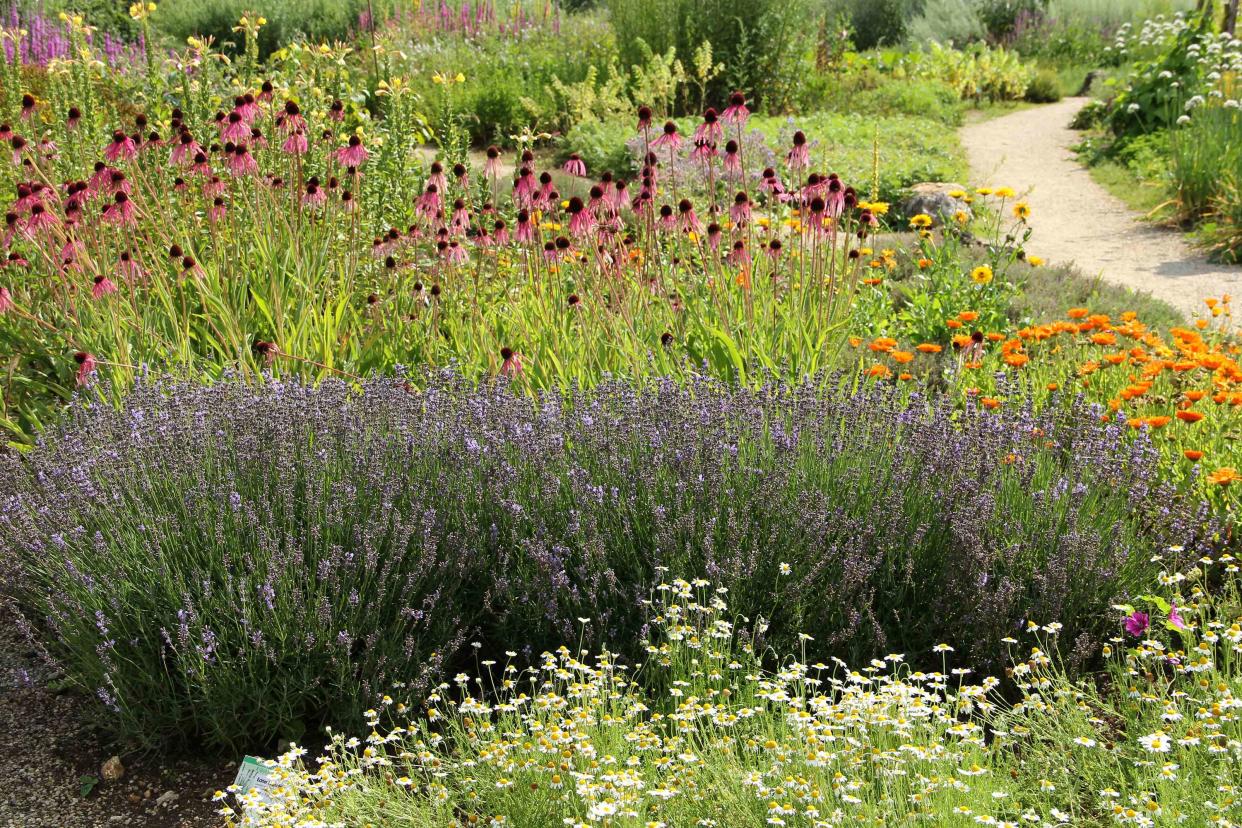
BasieB / Getty Images
Lavender (Lavandula spp.) is a popular woody perennial plant commonly kept in flower gardens and vegetable gardens. That's because it's an excellent companion plant, with aromatic purple flowers that attract pollinators and beneficial insects.
This versatile plant can be used for culinary, decorative, medicinal, and fragrance purposes. Lavender is easy to care for and will tolerate a variety of conditions, but grows best in warm, well-draining soil and full sun. The best companion plants for lavender thrive in the same conditions.
What Is Companion Planting?
Companion planting is the practice of planting different plant species in close proximity so that they can offer identifiable benefits to one another. Sometimes those benefits are mutually beneficial, while other times the benefit is one-sided. In the garden, companion planting is a smart way to use space efficiently, and in some cases, protect plants from unwanted pests.
Here are suggestions for lavender companion plants, including both edible and non-edible plants that grow in a wide range of hardiness zones.
20 Best Companion Plants for Lavender
Thyme
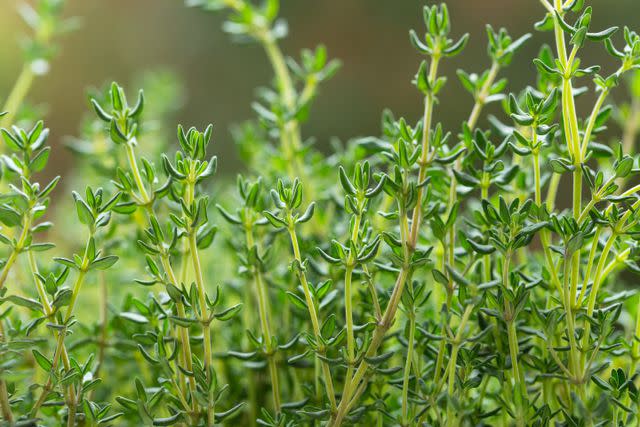
Yulia Naumenko / Getty Images
Similar to lavender, thyme is a low-maintenance plant that can be used as a cooking herb. It has a creeping growth habit and makes a great ground cover around the base of taller stalks of lavender.
Name: Thyme (Thymus vulgaris)
USDA Hardiness Zones: 5-9
Light: Full sun
Soil: Sandy, loamy
Sage
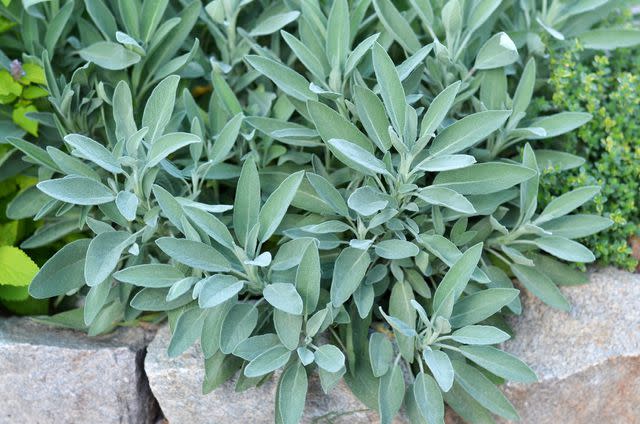
Yuliia Bilousova / Getty Images
Sage and lavender are both native to the Mediterranean, where they flourish in sunny, stony habitats. Both plants have similar water needs and strong scents, with different textures and colors that look appealing in a garden together.
Name: Sage (Salvia officinalis)
USDA Hardiness Zones: 4-10
Light: Full sun
Soil: Sandy, loamy, well-drained
Rosemary
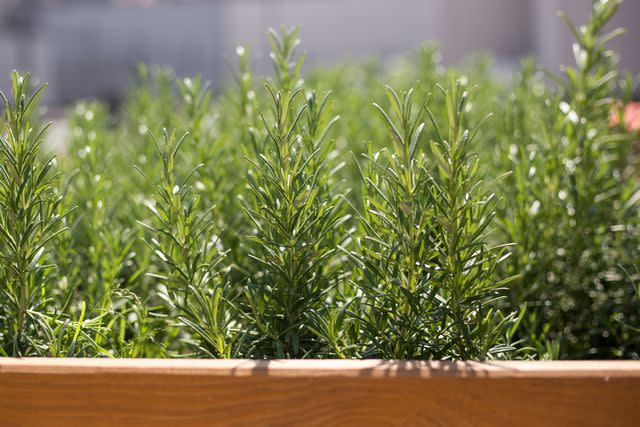
Mariia Skovpen / Getty Images
Shrublike with woody stems, rosemary and lavender are similar in appearance and have similar growing needs. They both have strong scents that can help deter pests, making them great additions to any vegetable garden.
Name: Rosemary (Salvia rosmarinus)
USDA Hardiness Zones: 8-10
Light: Full sun
Soil: Sandy, loamy, well-drained
Oregano
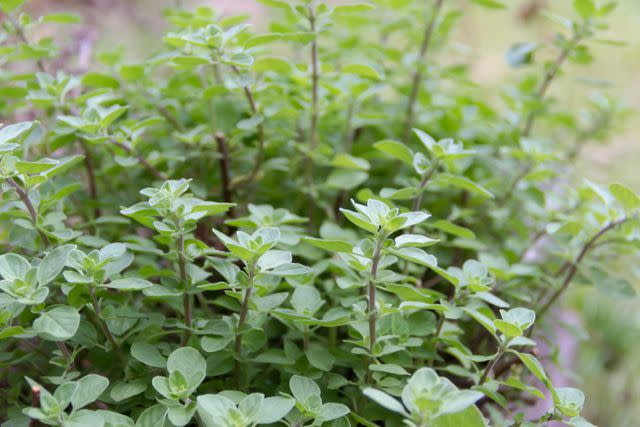
gabrielabertolini / Getty Images
Oregano is a low-maintenance herb that grows well next to lavender and repels aphids and small flies that could potentially damage your lavender plant. If you allow it to flower, oregano will also grow deep purple flowers.
Name: Oregano (Origanum spp.)
USDA Hardiness Zones: 4-10
Light: Full sun
Soil: Well-drained
Yarrow
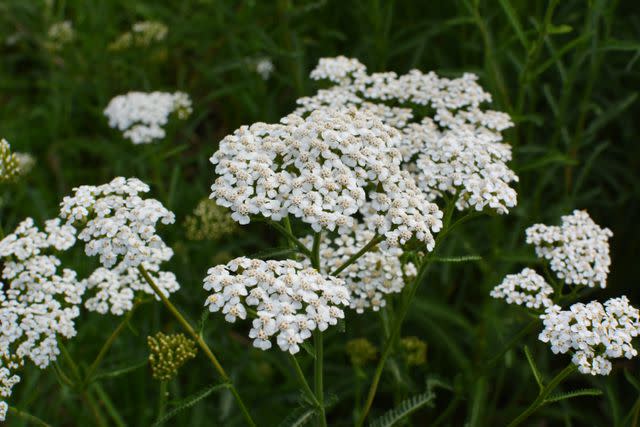
Orest Lyzhechka / Getty Images
If you want to attract bees and other pollinators to your garden, it's important to choose flowers of different shapes and colors. Yarrow is a great choice to complement lavender, as also thrives in full sun and is a drought-tolerant perennial. It comes in a variety of colors, including purple, white, yellow, pink, orange, and red.
Name: Yarrow (Achillea millefolium)
USDA Hardiness Zones: 3-9
Light: Full sun
Soil: Well-drained
African Daisy
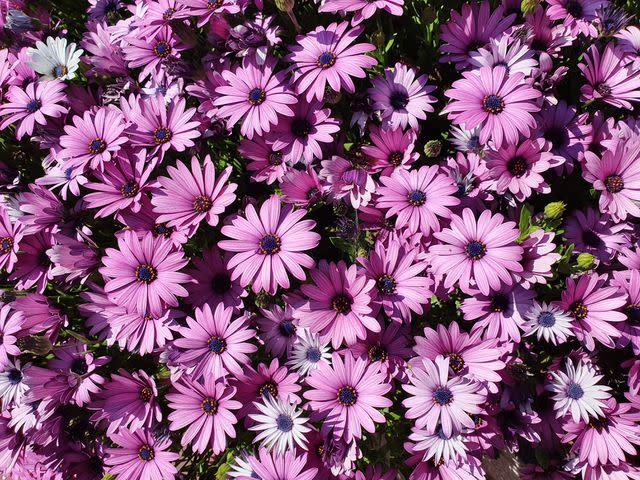
Firdausiah Mamat / Getty Images
The African Daisy is a tender perennial that has daisy-like flowers that come in an array of colors—purple, pink, yellow, orange, and white. Plant it in your garden bed as a filler or ground cover around your lavender plants. It will produce blooms continuously from spring to fall, even after your lavender plants have stopped flowering.
Name: African daisy (Osteospermum spp.)
USDA Hardiness Zones: 10-11
Light: Full sun, partial sun
Soil: Moist, well-drained
Roses
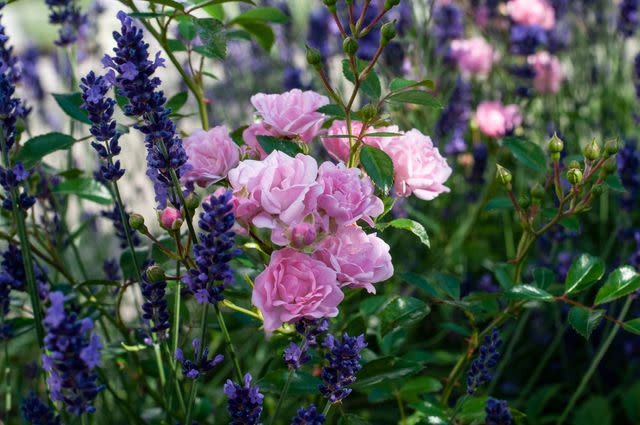
Carmen Hauser / Getty Images
Roses and lavender are a classic garden pairing for good reason. They both produce fragrant flowers, love the sun, and grow well in most conditions and USDA hardiness zones. Roses tend to attract aphids, while lavender attracts ladybugs, which feast on the unwanted pests.
Name: Rose (Rosa spp.)
USDA Hardiness Zones: 2-11
Light: Full sun
Soil: Loamy, well-drained
Coneflower
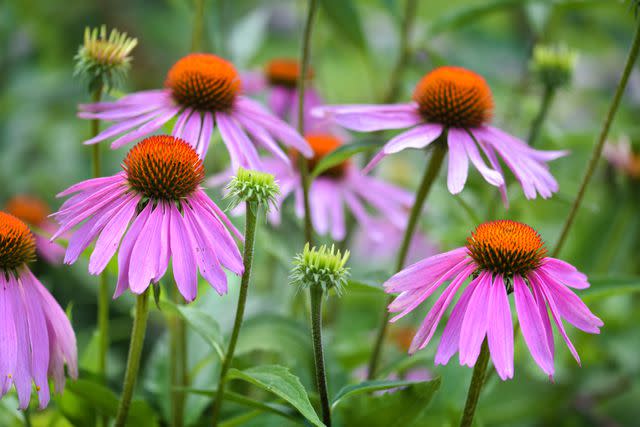
Fasil Tiru / Getty Images
Purple coneflower, or Echinacea purpurea, is by the most popular variety of coneflower, but coneflowers come in a variety of colors and forms. They bloom around the same time as lavender, and their flowers look beautiful together in ornamental flower beds.
Name: Coneflower, echinacea (Echinacea spp.)
USDA Hardiness Zones: 3-8
Light: Full sun, partial sun
Soil: Well-drained
Red Hot Poker
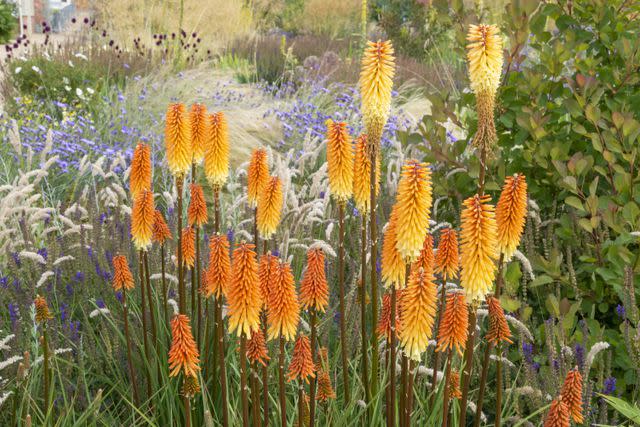
Photos by R A Kearton / Getty Images
The cool-toned flowers and foliage of lavender balances out the bright, warm hues of red hot poker, which produces show-stopping flower spikes in red, orange, and yellow colors. Both red hot poker and lavender thrive in heat and sunlight.
Name: Red hot poker, torch lily, Devil's poker (Kniphofia)
USDA Hardiness Zones: 5-9
Light: Full sun
Soil: Well-drained
Zinnia
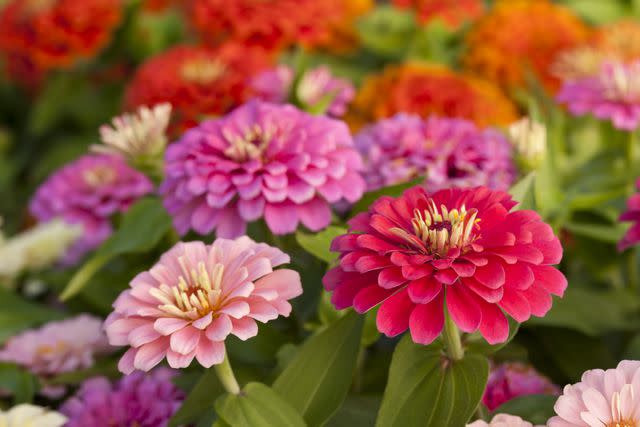
glennimage / Getty Images
Zinnias are colorful, cheerful, and present a great visual contrast to lavender in a garden. And like lavender, these sun-loving annual flowers are loved by all kinds of pollinators.
Name: Zinnia (Zinnia elegans)
USDA Hardiness Zones: 3-10
Light: Full sun
Soil: Well-drained
Red Valerian
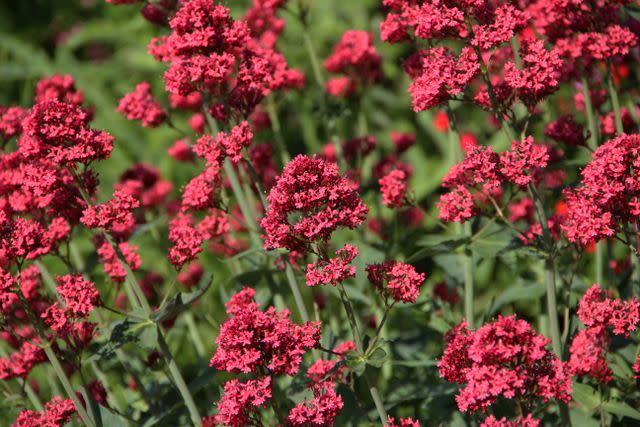
Jasenka Arbanas / Getty Images
An ideal companion plant for lavender, red valerian (also known as spur valerian) is a drought-tolerant perennial with one of the longest blooming seasons. Its clusters of deep red flowers supply butterflies, bees, and hummingbirds with nectar all summer long.
Name: Red valerian, spur valerian (Centranthus ruber)
USDA Hardiness Zones: 5-8
Light: Full sun, partial sun
Soil: Well-drained
Blue Fescue

brytta / Getty Images
For a grassy companion plant for lavender, consider planing blue fescue. This silvery-blue ornamental grass has the same growing requirements as lavender and adds an attractive textured interruption in your garden.
Name: Blue fescue, blue fescue grass (Festuca glauca)
USDA Hardiness Zones: 4-8
Light: Full sun, partial sun
Soil: Moist, well-drained
Strawberries
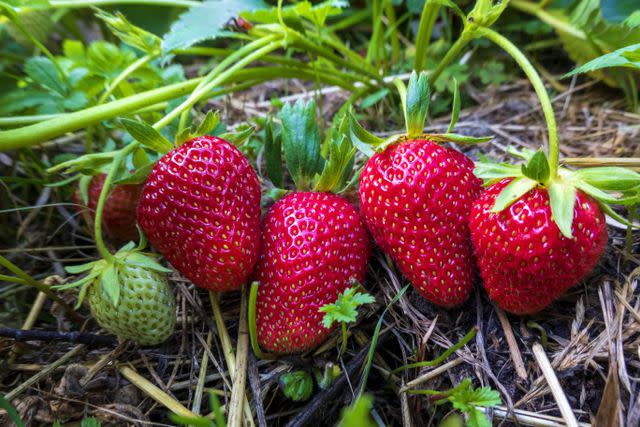
Westend61 / Getty Images
Planting lavender near fruit trees and bushes can help improve fruit production, as it attracts important pollinators while also repelling unwanted pests. When planted next to strawberries, the scent of lavender can help repel slugs, rabbits, and deer.
Name: Strawberry, garden strawberry (Fragaria x ananassa)
USDA Hardiness Zones: 4-9
Light: Full sun
Soil: Loamy, well-drained
Bell Peppers
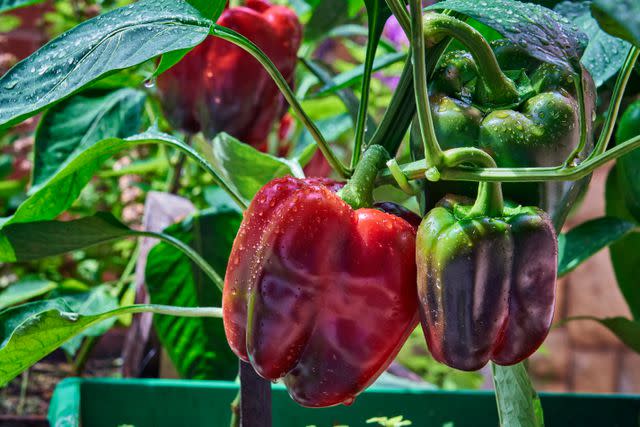
Helen Camacaro / Getty Images
While peppers are self-fertile, meaning they can fruit without cross-pollination, visits to their flowers by pollinators such as bees can improve the fruit set and size. One way to boost your pepper harvest and invite pollinators to your garden is by planting lavender.
Name: Bell pepper (Capsicum annuum)
USDA Hardiness Zones: 9-11
Light: Full sun
Soil: Loamy, well-drained
Jasmine
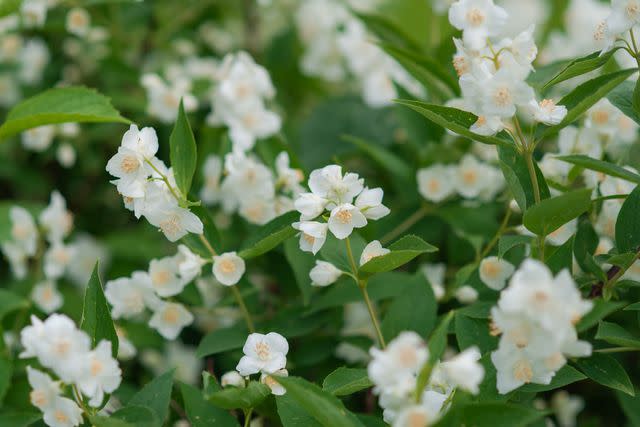
Kseniya Sharapova / Getty Images
The scents of jasmine and lavender complement each other beautifully. Both plants thrive in full sun, and lavender's aromas can help repel the aphids and whiteflies that jasmine tends to attract.
Name: Jasmine (Jasminus)
USDA Hardiness Zones: 8-11
Light: Full sun, partial shade
Soil: Well-drained
Black-Eyed Susan
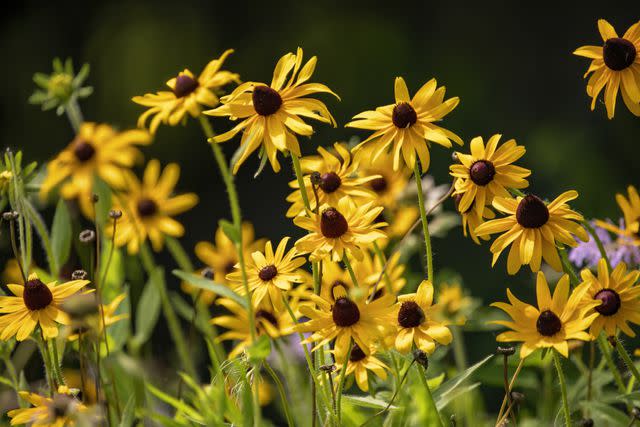
Ali Majdfar / Getty Images
Black-eyed Susans are a quintessential late-summer garden flower. The easy-care plant produces golden daisy-like flowers that look like a pop of sunshine, and are often planted as companion plants for lavender, echinacea, and sage.
Name: Black-eyed Susan (Rudbeckia hirta)
USDA Hardiness Zones: 3-9
Light: Full sun
Soil: Moist, well-drained
Catmint
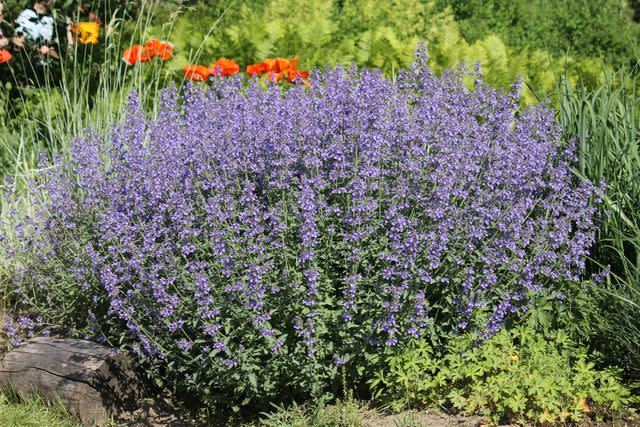
kazakovmaksim / Getty Images
While its lavender-blue flowers and bushy shape make it similar in appearance to lavender, catmint is a more cold hardy perennial. They both love full sun and well-drained soil, and are great additions to any low-maintenance garden.
Name: Catmint (Nepeta spp.)
USDA Hardiness Zones: 4-8
Light: Full sun, partial sun
Soil: Well-drained
Sedum
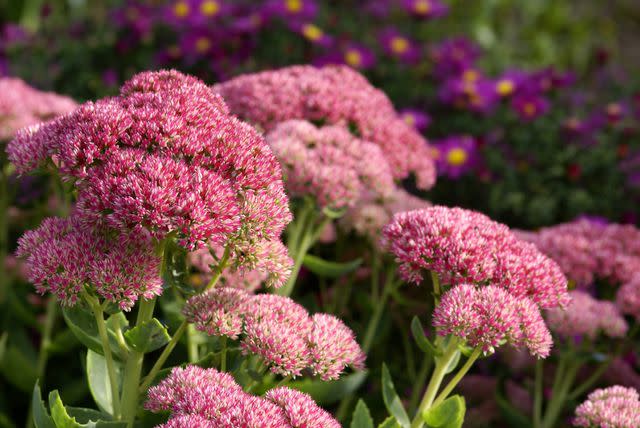
schnuddel / Getty Images
These low-maintenance plants have a low growth habit and produce flowers that come in red, pink, yellow, and white colors. As a ground cover, sedum can fill in the spaces around lavender quite nicely.
Name: Sedum, stonecrop (Sedum spp.)
USDA Hardiness Zones: 3-10
Light: Full sun, partial sun
Soil: Sandy, loamy, well-drained
Oleander
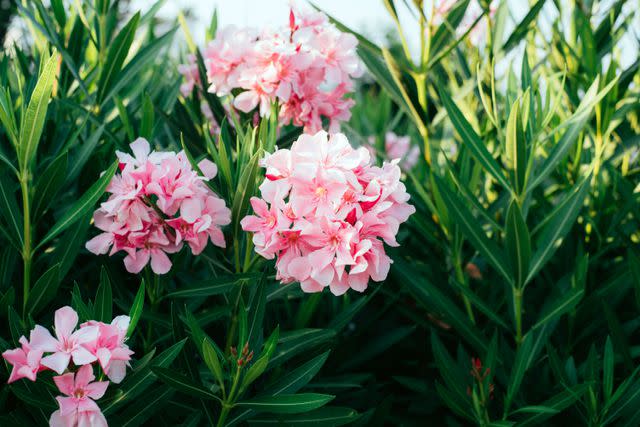
Maryna Terletska / Getty Images
This warm-climate landscape plant blooms year-round and tolerates sun, heat, and drought. Its showy, fragrant flowers contrast nicely with lavender's spiky blooms.
Name: Oleander (Nerium oleander)
USDA Hardiness Zones: 8-10
Light: Full sun, partial sun
Soil: Sandy, loamy, neutral acidic
Alliums
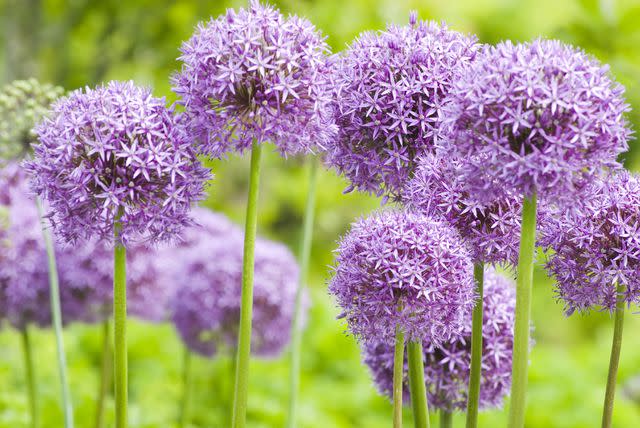
AlpamayoPhoto / Getty Images
Alliums, commonly referred to as ornamental onions, are an onion relative grown from bulbs. These fast-growing plants grow tall and have showy globe-shaped flowers, which contrast with the spiky tips of lavender blooms. Plant alliums to fill in gaps around your lavender plants.
Name: Ornamental onions (Allium)
USDA Hardiness Zones: 4-10
Light: Full sun
Soil: Well-drained
What Not to Plant With Lavender
Lavender requires full sun to thrive, so it needs at least six hours of direct sunlight per day.
The best companion plants for lavender are sun-loving plants that don't require a large amount of water. For that reason, it's best to avoid thirsty plants like ferns, hostas, and hydrangeas.
Shade-loving plants like violets and impatiens will also not thrive in the same areas as lavender.
Frequently Asked Questions
Does lavender grow better in pots or in the ground?
Almost all lavenders grow well in pots, especially dwarf and smaller varieties. However, lavender thrives best in its natural environment, and will grow bigger more quickly in the ground.
Which smells better, lavender or jasmine?
Lavender and jasmine both have floral scents, and which one smells better depends on your personal preference. Lavender has an herbaceous, earthy aroma, while jasmine smells rich and sweet.
What is lavender good for in the garden?
Lavender has many benefits in the garden. Its fragrant blooms attract beneficial pollinators like butterflies and bees while also repelling unwanted pests such as mosquitos, flies, moths, and ticks.
Lavender is beautiful and easy to grow, and it can also be harvested for flower arrangements, tea, crafts, cooking, and more.
Read Next: How to Propagate Lavender
Read the original article on The Spruce.

